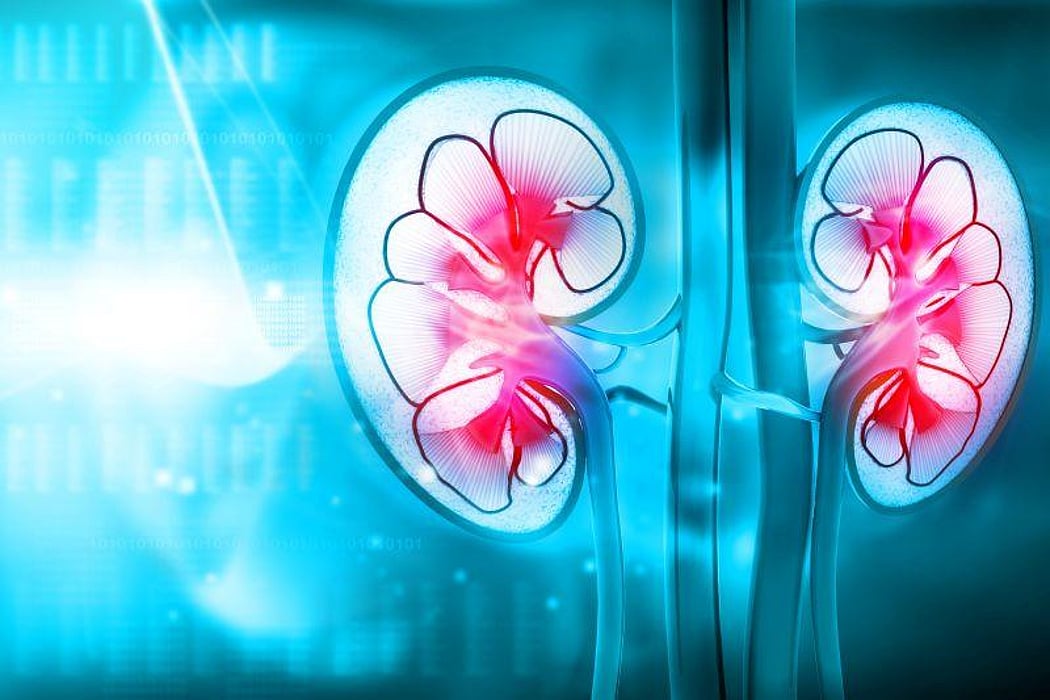American Society of Nephrology, Nov. 3 to 6

The annual meeting of the American Society of Nephrology was held this year from Nov. 3 to 6 and attracted participants from around the world, including nephrology specialists, researchers, scientists, and other health care professionals. The conference featured presentations focusing on the latest advances in the management of patients with kidney diseases and related disorders.
In one study, Michael Collins, Ph.D., of the Royal Adelaide Hospital and the Australasian Kidney Trials Network, and colleagues found that intravenous fluid therapy with balanced crystalloid solution reduces the incidence of delayed graft function (DGF) compared with saline in patients receiving a kidney from a deceased donor.
The authors aimed to determine if using a low-chloride balanced crystalloid solution (Plasma-Lyte 148) instead of saline would reduce the risk for DGF (i.e., dialysis within the first seven days after transplant). For the study, 808 participants from 16 hospitals were recruited and randomly assigned to either balanced crystalloid solution or saline during transplant surgery and up to 48 hours postoperatively. The researchers found that DGF occurred in 121 of 404 patients (30 percent) who received balanced crystalloid solution compared with 160 of 403 patients (40 percent) who received saline (adjusted relative risk, 0.74).
"To prevent one case of DGF, the number needed to treat with balanced crystalloid was 10. Balanced crystalloids were safe. There were no differences in serious adverse events between the groups," Collins said. "Given these findings, we believe that balanced crystalloids should become the standard-of-care intravenous fluid during and after deceased donor kidney transplantation."
In another study, Dearbhla Kelly, M.B.B.Ch., B.A.O., D.Phil., of St. James's Hospital in Dublin, and colleagues identified a link between impaired kidney function and cognitive impairment or dementia, determined by albuminuria.
Using data from the Framingham Heart Study, the authors found that impaired kidney function, as assessed by albuminuria, but not chronic kidney disease (CKD), was independently associated with markers of cerebral small vessel disease, specifically covert brain infarctions and a high burden of enlarged perivascular spaces in the basal ganglia. In addition, both CKD and albuminuria were independently predictive of incident dementia risk, with stronger associations noted in the case of the latter, which did not appear to be mediated by premorbid blood pressure. These results highlight the importance of albuminuria as a cerebrovascular and cognitive risk factor and indicate that there may be additional shared pathobiology in the kidney and the brain beyond hypertensive angiopathy.
"Further studies are needed to disentangle shared pathogenic mechanisms and causal relationships between impaired kidney function and cognitive disorders," Kelly said. "By understanding the mechanisms underpinning this relationship, we will be better able to prevent and treat dementia in this high-risk, vulnerable group. Clinical trials are required to determine if reduction of albuminuria may modify cerebrovascular and cognitive risk."
Jay Koyner, M.D., of the University of Chicago, and colleagues reported on a machine learning electronic health record-based postdischarge risk algorithm for predicting the development of major adverse kidney events (MAKE), including acute kidney injury (AKI), chronic kidney disease (CKD), need for dialysis, and mortality.
The authors used single-center data to develop a machine learning risk score that predicts MAKE at 90 days (MAKE90) and at 365 days (MAKE365) following an initial hospitalization (regardless of AKI status). The researchers demonstrated that the algorithm can accurately predict a composite end point of MAKE. The risk score provided area under the receiver operating characteristic curve (AUC) scores for the development of MAKE90 and MAKE365 of 0.74 and 0.73, respectively. In addition, the model performed best at identifying those patients who developed post-AKI CKD at both 90 (AUC, 0.94) and 365 days (AUC, 0.92).
"Health record data can be used to predict MAKE90 and MAKE365 following hospital admission and, if validated, can be used to identify patients most in need for postdischarge follow-up with nephrology," Koyner said. "External validation is very much needed before it is ready for clinical implementation. Once validated, it then needs to be tested to demonstrate that implementation actually leads to improved patient outcomes in the targeted population."
ASN: Empagliflozin Cuts Risk for Progression in CKD
WEDNESDAY, Nov. 9, 2022 (HealthDay News) -- For patients with chronic kidney disease at risk for progression, the risk for progression of kidney disease or death from cardiovascular causes is reduced with empagliflozin treatment, according to a study published online Nov. 4 in the New England Journal of Medicine to coincide with Kidney Week, the annual meeting of the American Society of Nephrology, held from Nov. 3 to 6 in Orlando, Florida.
ASN: Discontinuation of RAS Inhibitors Does Not Increase eGFR in CKD
WEDNESDAY, Nov. 9, 2022 (HealthDay News) -- For patients with advanced and progressive chronic kidney disease, discontinuation of treatment with renin-angiotensin system inhibitors is not associated with a difference in the long-term rate of decrease in the estimated glomerular filtration rate, according to a study published online Nov. 3 in the New England Journal of Medicine to coincide with Kidney Week, the annual meeting of the American Society of Nephrology, held from Nov. 3 to 6 in Orlando, Florida.
Related Posts
Una hora de entrenamiento con pesas por semana puede alargar la vida
MARTES, 1 de marzo de 2022 (HealthDay News) -- Añadir un entrenamiento de fuerza...
AHA: Baxdrostat Studied in Treatment-Resistant Hypertension
TUESDAY, Nov. 8, 2022 (HealthDay News) -- Patients with treatment-resistant...
Prevalence of Adrenal Tumors Studied in Adults in China
TUESDAY, Sept. 13, 2022 (HealthDay News) -- The prevalence of adrenal tumors is...
Great Step for Baby: Walkable Neighborhoods Linked to Safer Pregnancies
MONDAY, Aug. 21, 2023 (HealthDay News) -- Walkable neighborhoods -- with...
